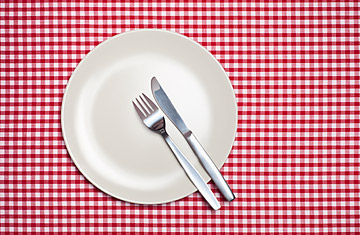
The typical U.S. food consumer? Dead.
This jaw dropper may not rank up there with TIME's famous "Is God Dead?" cover in 1966, but from a restaurant owner's point of view, it's close. Nation's Restaurant News recently ran a special report on "feeding the needs of a new America," in which the long-running trade publication pronounces the average diner a piece of history, vanished to the same eternal twilight as the powdered wig, the liberal consensus and mounted cavalry.
The article draws on a white paper by a Madison Avenue demographer about 2010 Census projections. In an extended interview, Peter Francese of Ogilvy & Mather tells the trade publication what every other business is finding out: "In terms of marketing, there is no average American." This shouldn't really come as a shock to the industry; it's not like it happened overnight. There is no racial majority in the nation's 10 biggest cities, married couples account for less than half of households, and customers of every age and clime are increasingly unpredictable. This was a hard lesson for the restaurant business, which assumed customers would fit into certain broad categories: harried homemakers, say, or squeamish Midwesterners who would recoil at the sight of a whole fish. (To this day, the nation's hamburger chains believe that a trace of pink will terrify customers, a fact that accounts for the universal badness of chain burgers.)
These facts are so hard that the nation's grubmongers are being advised to give up on pleasing a broad swath of society and instead concentrate on small, specific segments of the market. It's narrowcasting for the stomach and makes perfect cultural sense, but it's still a great loss. I, for one, am sad to see the Average Diner go. I related to him; he took me out of myself; I measured my appetites against his. Sometimes I gloried in my conformity, as when writing hosannas to the universal white-bun hamburger of old. At other times, the Average Diner allowed me to celebrate my bold heterodoxy: he didn't like rare hamburgers or dark chocolate, and I did.
The self-contained insularity of American life has been commented on endlessly, with its gated communities, mirror-tinted SUVs and Xbox-equipped "man caves" requiring zero participation in public life. But these ever narrowing areas of interest, however great they may be — and things like all-Latin fried-chicken chain Pollo Campero or Bacon of the Month Club are really, really great — point out that we are no longer a single nation. And when you lose that, you lose the foods that go with it, like the old standards of roast beef and twice-baked potatoes and lobsters served with melted butter and a nutcracker. Globalists and gastronomes may be heartened at the thought of a universal fusion cuisine or a thousand ethnic nooks and crannies in the national muffin. But it depresses me to think of the great, lost Golden Age of Meat Loaf.
Dining, to be fair, is getting the bad news late. The TV networks learned their lesson the hard way in the late '60s, when they found that once omnipotent stars like Lucille Ball, Dean Martin and Jackie Gleason no longer commanded the attention of a universal audience. They came up with all kinds of solutions — ensemble sitcoms with census-like casting, anthology shows that could shoehorn three stories on one Love Boat trip, spin-offs of spin-offs — but there were no more Lucy's or Dino's, that much was clear.
The special report contains a somewhat sinister revelation as well. "The divide between haves and have-nots is growing," Nation's Restaurant News comments, stating the obvious. Francese didn't really have an answer for how this plays out in the kitchen, or at least not one he was willing to share. (He hems and haws about more customer questionnaires being needed.) But the answer's there in the article, in one of the responses the paper got to its survey about changing tastes. The owner of a Boston gastropub takes note of its guests' "increasingly open desire for more stimulation, either in challenging menu items, more obscure wines and varietals, and old-school cocktails with a less sweet, more bitter and herbal flavor profile." The owner adds, "We are selling more offal than ever."
More offal! All right! That's what America needs more of. At least, that's what a certain strata of Americans do; another strata is hoping to buy less offal, especially in their hamburgers. They have more offal than they can handle; what they want are some of the prime rib, tenderloin and lamb racks that urban gastronomes are so over. The red state–blue state dichotomy has been laughably overdrawn, but the difference between the cutthroat race to the bottom in the fast-food business and the high-end preoccupations with cooking offal and arranging entrees with tweezers could hardly be more apparent. You don't need a trade publication's special report to see it. As gastropubs multiply in big cities, Burger King is boasting of ripping off the Sausage McMuffin at the same time it is trying to cope with a franchisee mutiny over the burden of selling $1 double cheeseburgers. It's truly a battle royale out there.
All of which isn't to say there is nothing holding together all the different sectors of the eating public. Whether in the form of bizarre, genius fast food like KFC's Double Down, a fried-chicken, bacon and cheese sandwich in which two breasts serve as the bun, or the latest high-end fondues, foams and organ fritters, we all have an "open desire for more stimulation." We're at least American enough to all have that in common, anyway.
Josh Ozersky is a James Beard Award–winning food writer and the author of The Hamburger: A History. You can listen to his weekly show on the Heritage Radio Network and read his column on home cooking on Rachael Ray's website. He is currently at work on a biography of Colonel Sanders.
